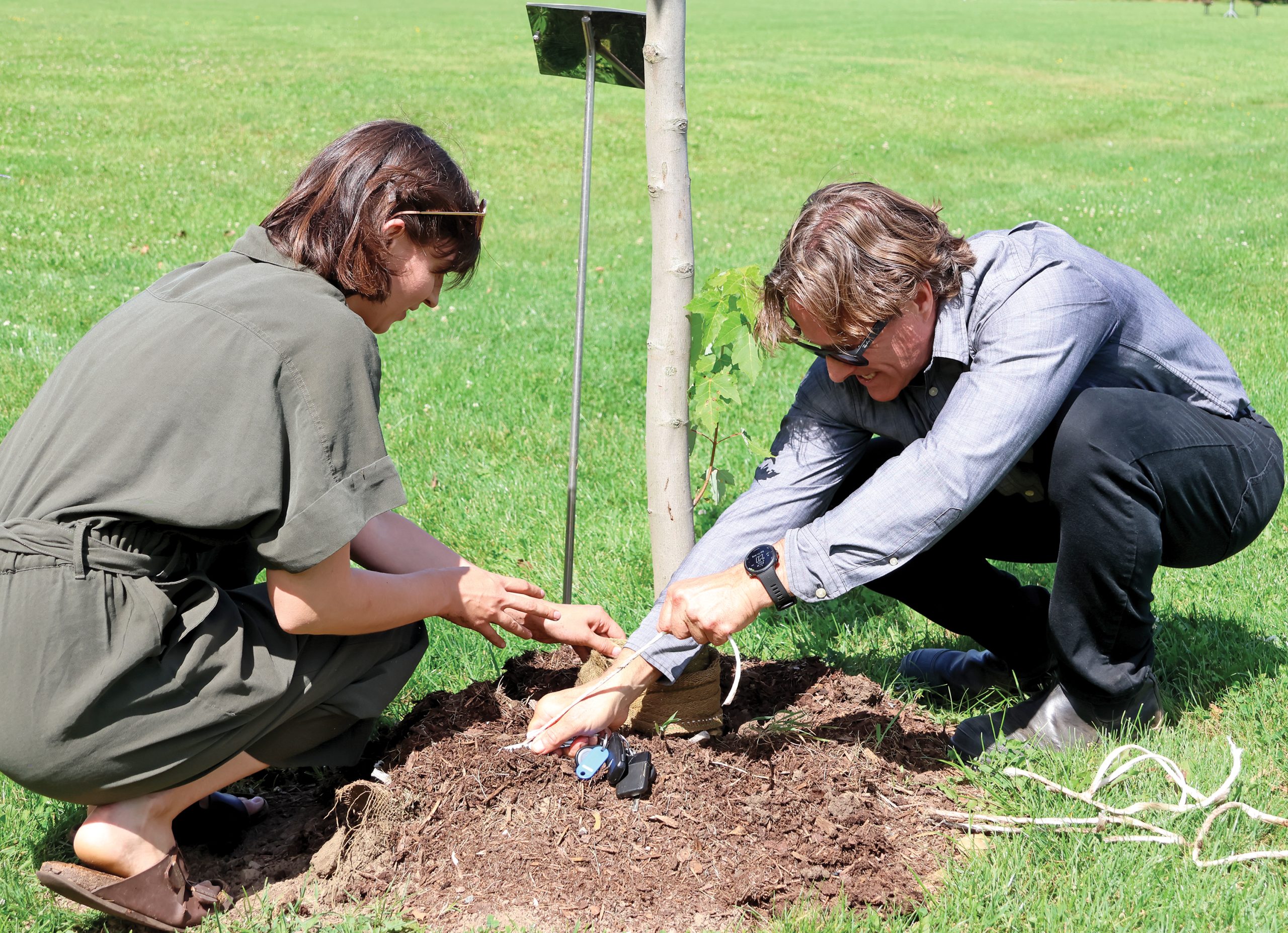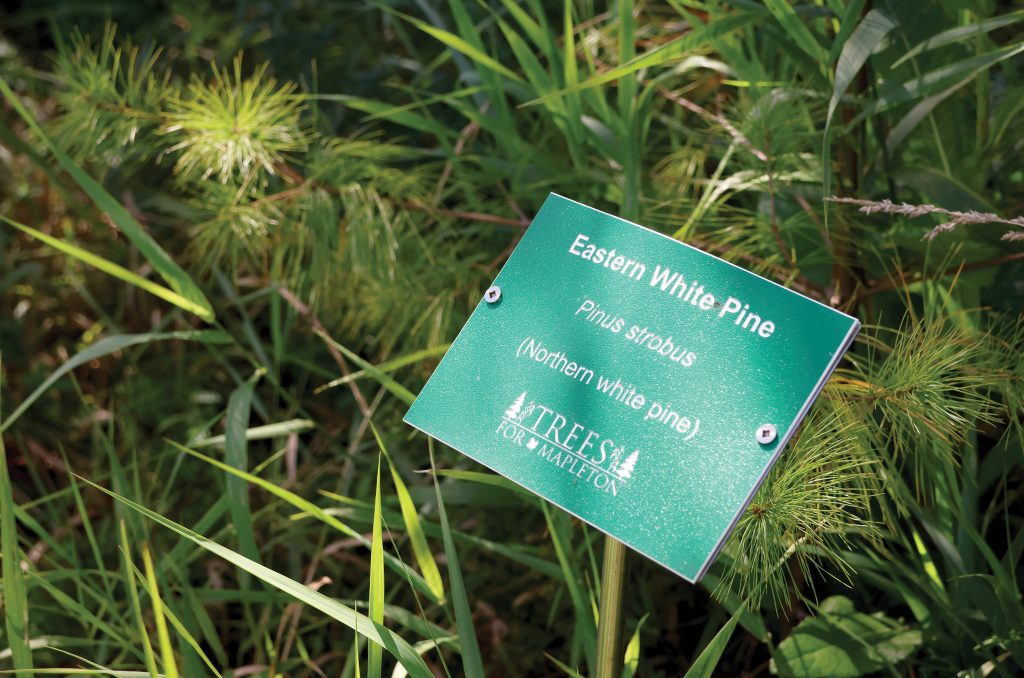DRAYTON – For every resident in Mapleton Township, there is at least one tree.
“We put as many as we could in here,” Trees for Mapleton’s Bruce Whale told a small group of supporters gathered at Drayton’s Riverside Park on Aug. 31.
They were gathered to celebrate the completion of a project inspired by Trees for Mapleton founder Paul Day, a man who was dedicated to promoting tree planting in the township.
Day died in 2016, and his passing inspired the W. Paul Day Forest project, an initiative aimed at planting one tree for every person in the township, based on the 2016 census.
That put the goal at 10,527 trees.
Whale told Day’s family members and supporters that the milestone had not only been reached, but surpassed in the seven years since the project began in 2017.
“With the help of our community, we did get a lot of trees in the ground,” he said.
The final tally came in at 11,020 trees, he added.

Tree-planting advocate Paul Day’s granddaughter Meaghan Mechler, left, and Wellington County’s Green Legacy program manager Rob Johnson work to cut away the burlap from the trunk of a new tree in Drayton’s Riverside Park during a celebration event in honour of Day on Aug. 31. nPhoto by Jessica Lovell
The group worked with the Grand River Conservation Authority, Wellington County’s Green Legacy Program, the Township of Mapleton and local landowners to plant trees at various sites.
“We ran out of places to plant trees in this park,” Trees for Mapleton committee member Liz Samis told the Advertiser.
Trees were planted at various sites, including on Wood Street at the Conestoga Crest retirement home, a GRCA property near the Conestogo Dam, Centennial Park, Drayton Cemetery, and more.
And various community groups – for example, local Girl Guides and students in the environmental leadership program at Norwell high school – pitched in at planting events, Samis said.
But it wasn’t just about planting volume; the group tried to make sure it was planting the right trees for the area, she explained.
“We tried to plant native trees based on the 1843 land survey,” Samis said.
The group managed to represent all the trees listed in that survey with the exception of ash trees, due to the emerald ash borer, she said.
They even planted an elm that has resistance to Dutch elm disease, Samis said.
At Riverside Park, small green plaques next to some of the trees identify the species, adding to the educational aspect of the program.

Plaques like this one in Drayton’s Riverside Park add to the educational element of Trees for Mapleton’s work. Photo by Jessica Lovell
Whale said tree cover in the township had been as low as eight per cent, where it should be closer to 15%, owing partly to a historic lack of understanding of the value of trees.
“The land is quite good in this township, and when farmers settled they tended to clear a little more than they should have,” he said.
Day made it his mission to educate farmers about the value of planting windbreaks, as well as to promote tree planting to prevent soil erosion, improve environmental health and combat climate change.
“He taught economics and marketing, and that tied into spreading the word,” his wife Yvonne Day told the Advertiser.
She explained Paul could sell farmers on the idea that planting windbreaks could make a farm more successful.
“He passionately believed in it,” she said.
She and Paul had co-owned a farm where they grew grain and corn, as well as organic apples.
She said they planted trees as windbreaks on their own farm, “and the yields were great because of it.”
Yvonne said she was pleased to see the completion of the project started in Paul’s name, and that Trees for Mapleton would continue the work he had started.
“To leave a legacy is a really great thing,” she said.



